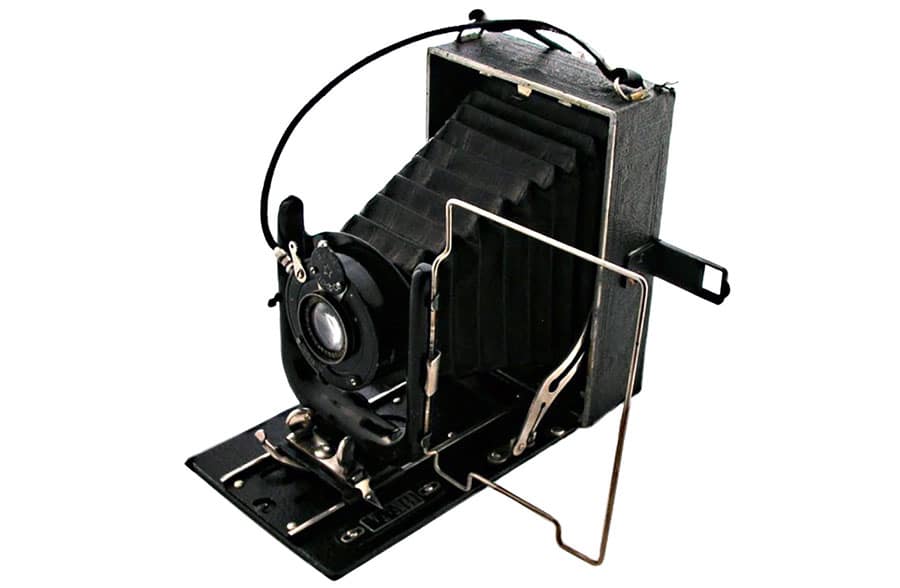ARFO-2a
The large-format Soviet camera ARFO-2a was produced from 1933 to 1938. This camera has practically no differences from the ARFO-2 camera.

ARFO-2a is a 9×12 plate folding camera. Focusing is done by the ground glass using a lever drive located in front on the slides of the lens board. In addition, focusing is done by the distance scale. Unlike more advanced large format cameras, this Soviet camera does not have double-extension bellows.
ARFO-2a Specifications
- Type: 9×12 folding camera
- Manufacturer: Foto-Trud
- Production period: from 1933 to 1938
- Format: 9×12
- Lens mount: fixed lens
- Lens: ARFO anastigmat f4.5/135
- Shutter: leaf shutter with speeds of 1/25, 1/50 and 1/100 sec. plus B and T
- Viewfinder: ground glass
- Lighmeter: none
- Flash synchronisation: none
- Selftimer: none
- Weight: 1140 grams


The camera was equipped with an ARFO shutter with shutter speeds of 1/25, 1/50, 1/100, B, and T.
The name of the model is stamped on a leather handle, as on all EFTE and ARFO cameras.



The shooting was carried out on a photographic plate installed in a removable cassette, which was installed instead of a cassette with ground glass, as in all similar large-format folding cameras.
When folded, the camera is compact enough and fits in a large pocket or small case with several spare cartridges.

To bring the camera to the working position, you need to press the button on the top of the body and flip down the lens cover. Then, holding the special plates, pull the lens forward along the runners on the cover.
For modern photographers, the process of working with this large-format soviet camera can seem very complicated and lengthy. But of course, in those days it was considered something ordinary, and most of the cameras of those years had a similar principle of operation.

As with the EFTE and ARFO-2 cameras, this large-format USSR camera is a rather interesting camera. And as with most other cameras, ARFO-2a is a copy of German cameras. But unfortunately, it’s quite difficult to find these cameras in good condition and at a low price.
For modern photographers, this camera, like all early Soviet large format cameras, can be interesting more as a collectible item than as a tool for taking pictures.
But nevertheless, ARFO-2a can be used as a camera in order to take pictures with it. Despite a number of limitations, using this camera in combination with the right photosensitive plates, you can create very interesting photographs.







